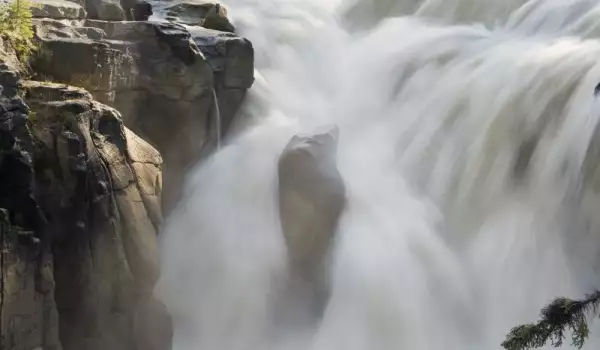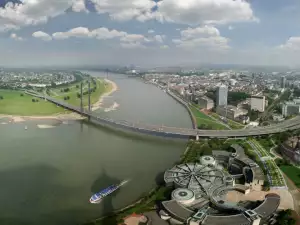Sunwapta Falls

Sunwapta Falls is one of the exciting and iconic Canadian Jasper National Park views. The huge flow of water at the natural phenomenon attracts a huge number of visitors to this protected area, which is the largest in the territory of the Canadian Rockies.
Jasper is spread over an area of 10 878 square kilometers, which unites a diverse wealth of waterfalls, glaciers, lakes and the picturesque mountains of Canada. Jasper is included in the UNESCO list of World Heritage Sites, since 1984.
Sunwapta Falls is formed along the eponymous river, which originates from the Athabasca Glacier.
Sunwapta is a word from the language of the indigenous peoples of these territories and literally means "troubled waters".
In fact, this landmark is composed of two parts – the upper and lower waterfall. The majority of visitors, visit the park above the waterfall because access is easier. The bottom water formation is a short distance away and also has to be seen.

Sunwapta’s height is about 18-22 meters - not a particularly impressive size, but it compensates with a turbulent flow and stunning views. The width of the ridge is about 9-10 meters. The best time of the year to see Sunwapta is in late spring and early summer, when the glaciers melt and cause a turbulent flow of water.
Sunwapta Falls can be easily reached via the popular Icefields Parkway, which connects Jasper with the no less rich in flora and fauna Banff National Park. Sunwapta is just one of many beautiful waterfalls in the protected area, which form the so-called "Hanging valleys".
These valleys are the result of receding glaciers from 8000 years ago, which leave behind a large U-shaped valley. The Hanging valleys are formed at the meeting of the larger and the smaller and the result is something like a sagging of the smaller over the larger elevation.
Sunwapta’s lower Chaba Valley hangs over Athabasca Valley and forms a deep limestone gorge. Easy access to the upper waterfall is the reason why it is more crowded. To get to the bottom fountain, you must follow the right, north trail along the Sunwapta river.















